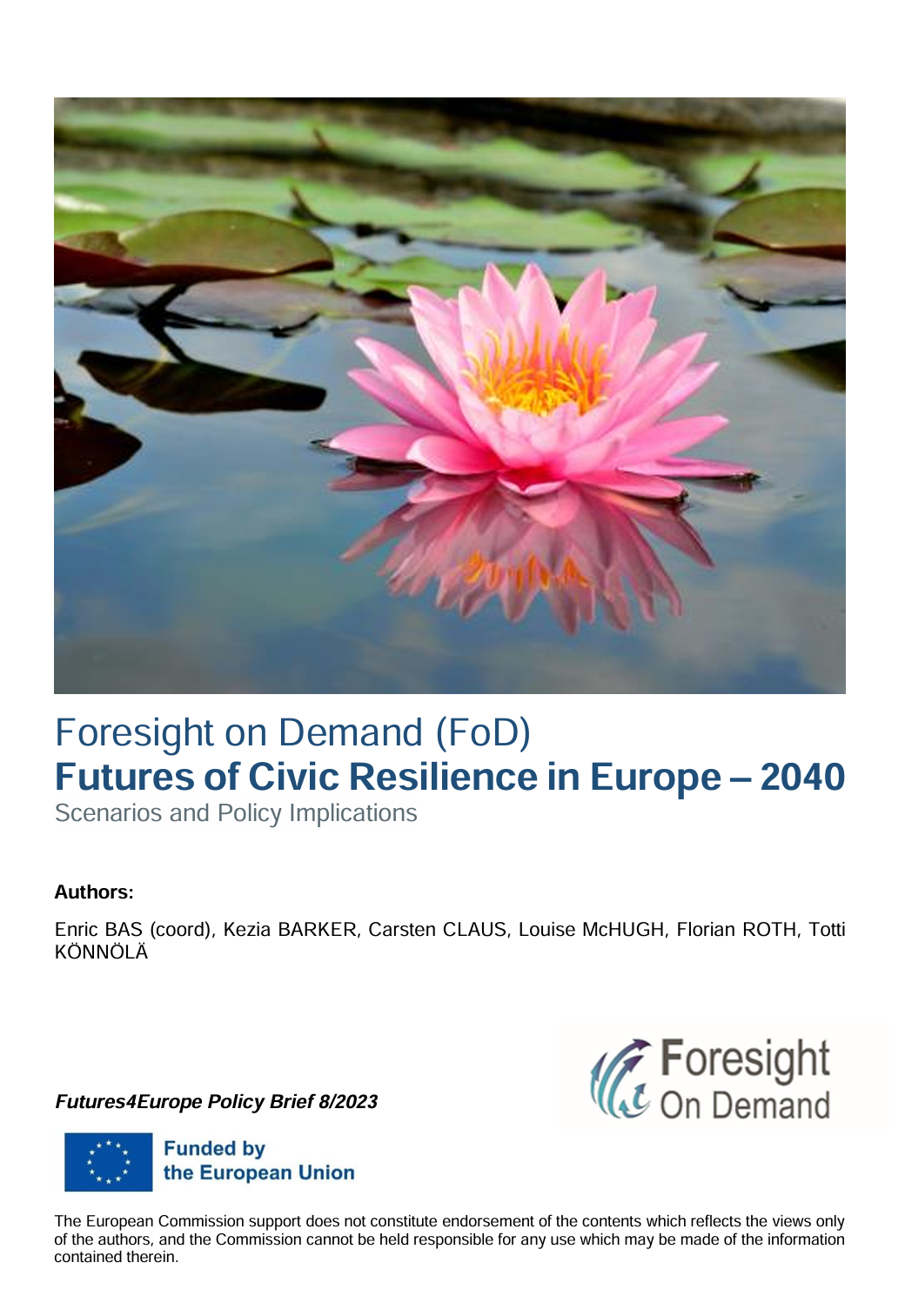Insight Foresight Institute participated in the Foresight on Demand consortium studying “Futures of Civic Resilience in Europe – 2040: Scenarios and Policy Implications”. The study developed a policy brief exploring four possible future scenarios for 2040 and their implications for current decision-making. Also, recommendations for R&I policy measures were defined to address any given social effect. The work was part of the larger platform project named “European R&I Foresight and Public Engagement for Horizon Europe” for the European Commission, coordinated by Totti Könnölä, the CEO of Insight Foresight Institute.

The brief outlines the major societal challenges which are changing the landscape of the European Union. Since the beginning of the 21st century, the instability of the economy and the difficulty of the EU to respond to it have contributed to the lack of trust among citizens. The report considers civic resilience as the ability of a community to prepare and adapt to adversities. It calls for local commitment, preparedness beyond the support of the public administration and the private sector.
Futures of Civic Resilience in Europe develops four alternative scenarios with the aim of helping policymakers prepare for future crises and strengthen the resilience of civic society today. The scenarios are identified around two main axes (technological & economic adaptation and social & environmental stewardship):
- 1st scenario: both axes are high, it is denominated as the ideal future. Low levels of community and individual resilience, civic society would not be ready to face an unexpected event.
- 2nd scenario: techno-economic adaptation is low, but socio-environmental stewardship is high. Institutional void, but strong community consensus, which means that citizens are subordinate to the collective, and there is a low level of individual resilience.
- 3rd scenario: high techno-economic adaptation meets low socio-environmental stewardship. It represents a risk to the social fabric due to the omnipresence of technology. In a homogenised alienated society where social institutions are annulled, the only possible resistance may come from the individuals.
- 4th scenario: it is regarded as the worst-case scenario, where both axes are low. It would be a radical context where both community and individual resilience may be high because hostile environments reinforce the survival instinct.

Keeping in mind the unpredictability of the social effects of technology and the importance of public services and local actors for civic resilience, it is important to engage broadly with actors responsible for public services in the definition of R&I policy agendas. Thus, R&I measures could:
- Stimulate a radical social innovation through “glocal” (local but with global impact) creative initiatives.
- Identify and define boundaries for upcoming cutting-edge technologies implantation, prioritizing social stability and welfare.
- Define agendas in resilience research, oriented to explore new potential needs and new ways of addressing existing needs.
- Make existing public services more effective and resilient, for instance, via education and health.
The study highlights that in addition to R&I agendas, civic resilience can be strengthened by improving governance, local democracy, public services and education policies.
Further information
Enric Bas, Kezia Barker, Carsten Claus, Louise McHugh, Florian Roth and Totti Könnölä. “Futures of Civic Resilience in Europe – 2040: Scenarios and Policy Implications”. Publications Office of the European Union, 2024.